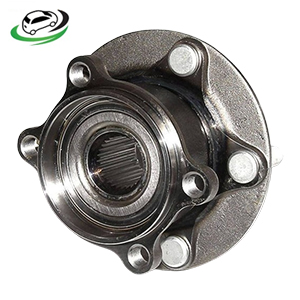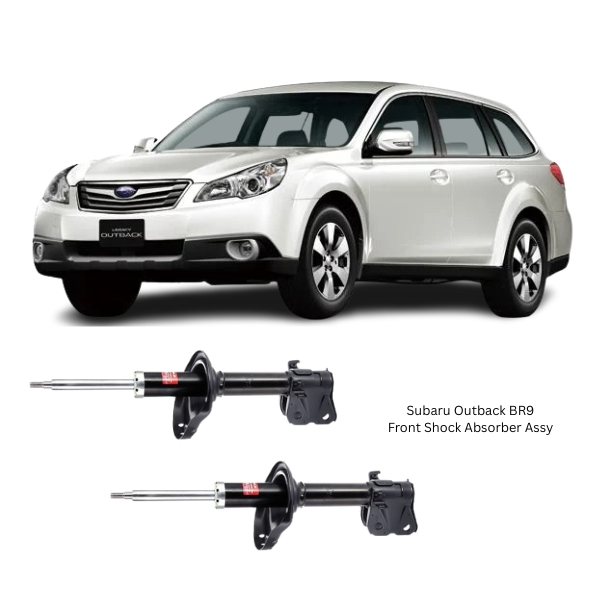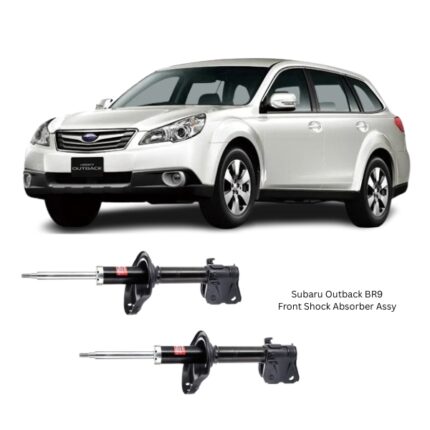Get Subaru Outback BR9 Front Shock Absorber Assy 339240 in Kenya
The Front Shock Absorber Assembly is one of the most essential components in a vehicle’s suspension system. Its primary role is to control the movement of the suspension and springs, ensuring that the front wheels remain in constant contact with the road surface. By doing so, the shock absorber contributes significantly to ride comfort, vehicle stability, and steering precision.
Positioned vertically or diagonally between the vehicle’s body and the lower control arm or steering knuckle, the front shock absorber assembly moderates the impact of bumps, potholes, and other road irregularities. Without it, the vehicle would bounce uncontrollably after every dip or bump, resulting in a harsh and unstable ride.
Construction and Key Components
The Front Shock Absorber Assembly is a precisely engineered component, designed to endure substantial dynamic forces while delivering consistent damping performance. Its construction typically includes the following parts:
-
Shock Absorber Tube: A steel or aluminum cylinder that houses the internal hydraulic system. It is filled with oil or gas to provide damping resistance during operation.
-
Piston and Rod: The piston moves up and down inside the tube, with the rod extending to connect the assembly to the chassis. The movement of the piston through hydraulic fluid is what provides the damping effect.
-
Valving System: Internally located on the piston or at the base of the tube, valves control the flow of fluid through chambers to regulate the damping force during compression and rebound.
-
Mounting Bushings: Rubber or polyurethane bushings at both ends of the shock absorber allow flexible yet secure attachment to the suspension system, minimizing vibration and noise.
-
Protective Boot and Bumper Stop: A rubber boot covers the rod to protect it from dust and debris, while a bumper stop prevents bottoming out during extreme compression.
-
Gas Charging (in Gas Shocks): Many modern shocks are gas-charged, using nitrogen to reduce aeration or foaming of the hydraulic fluid, which helps maintain consistent damping characteristics.
Function and Performance Role
The shock absorber doesn’t support vehicle weight directly—that task falls to the springs—but it works with the springs to control suspension movement. It does this in two main ways:
-
Damping Suspension Movement: When the vehicle goes over a bump, the spring compresses and stores energy. The shock absorber slows the extension and compression of the spring to prevent excessive bouncing.
-
Maintaining Tire Contact: A key job of the shock absorber is to ensure that the tires remain firmly in contact with the road surface. This improves traction, braking efficiency, and steering control.
In the front suspension system, where steering input is closely tied to wheel behavior, a well-functioning shock absorber is crucial for driving accuracy and safety.
Advantages of a High-Quality Front Shock Absorber Assembly
Installing a premium Front Shock Absorber Assembly provides multiple benefits that affect vehicle dynamics, safety, and component longevity:
-
Enhanced Ride Comfort: Effectively absorbs road irregularities to provide a smoother and quieter ride.
-
Improved Handling and Control: Limits body roll, nose dive during braking, and instability during cornering.
-
Better Steering Response: Keeps the front wheels grounded and reduces delay or sloppiness in steering input.
-
Minimized Tire Wear: Helps ensure even tire contact with the road, which prevents uneven or accelerated tread wear.
-
Protection for Suspension Components: Reduces stress on other parts like springs, control arms, and bushings.
-
Consistent Performance: High-quality materials and design ensure reliable function across various temperatures and driving conditions.
Types of Shock Absorbers
While the general design is consistent, there are different types of shock absorbers, including:
-
Twin-Tube Hydraulic: Traditional design using hydraulic oil to control damping.
-
Twin-Tube Gas Charged: Adds nitrogen gas to minimize fluid aeration, improving responsiveness.
-
Mono-Tube: A single tube with larger piston surface area and improved cooling, often used in performance applications.
-
Coilover Assemblies: Combine a shock absorber and coil spring in one integrated unit for adjustable ride height and damping.
Regardless of type, all shocks are designed to meet specific damping and durability standards to suit the vehicle’s suspension geometry.
Signs of Worn or Failing Shock Absorbers
Over time, shock absorbers degrade due to regular wear, fluid leakage, corrosion, or internal component fatigue. Common symptoms of a worn front shock absorber include:
-
Bouncing After Bumps: The front of the vehicle continues to bounce after hitting a dip or bump.
-
Longer Braking Distance: Worn shocks can affect weight distribution during braking, increasing stopping distance.
-
Poor Steering Response: Increased body roll and vague steering feel.
-
Excessive Nose Dive: The front end dips noticeably when braking.
-
Uneven Tire Wear: Cupping or scalloping patterns on tires may indicate inadequate damping.
-
Fluid Leaks: Hydraulic oil visible on the shock absorber body.
-
Knocking or Clunking Noise: Often caused by worn bushings or internal shock components.
Timely replacement of a damaged or degraded shock absorber is crucial to maintain safety and handling.
Installation and Fitment
Proper installation of the Front Shock Absorber Assembly is essential to restoring suspension performance and vehicle stability. Installation typically involves:
-
Lifting the Vehicle: The front of the vehicle is raised and supported with jack stands.
-
Removing the Wheel: For access to the shock mountings.
-
Disconnecting the Shock Mounts: Upper and lower bolts or studs are removed from the suspension and chassis.
-
Removing the Old Shock: The shock absorber is taken out carefully to avoid damaging surrounding components.
-
Installing the New Assembly: The new unit is positioned and secured using proper torque specifications.
-
Final Check: Suspension components are inspected, and a test drive is recommended.
-
Wheel Alignment (if required): Some installations affect geometry and require realignment.
Proper tools and safety precautions should be used during installation. Professional installation is recommended for optimal results.
Maintenance and Care
Although front shock absorbers are generally maintenance-free, regular inspection helps extend their service life and maintain peak performance:
-
Inspect for Leaks: Check for oil residue or wetness on the shock body.
-
Observe Tire Wear: Uneven wear patterns may indicate damping issues.
-
Listen for Unusual Noises: Clicking or knocking could be signs of worn bushings or loose mountings.
-
Avoid Overloading: Carrying excess weight increases wear on front shocks.
-
Keep Clean: Remove mud or debris buildup that may damage seals or rods.
Routine checks during scheduled service intervals can catch early signs of wear and prevent costly damage to the suspension system.
Follow us on Facebook for more parts.




